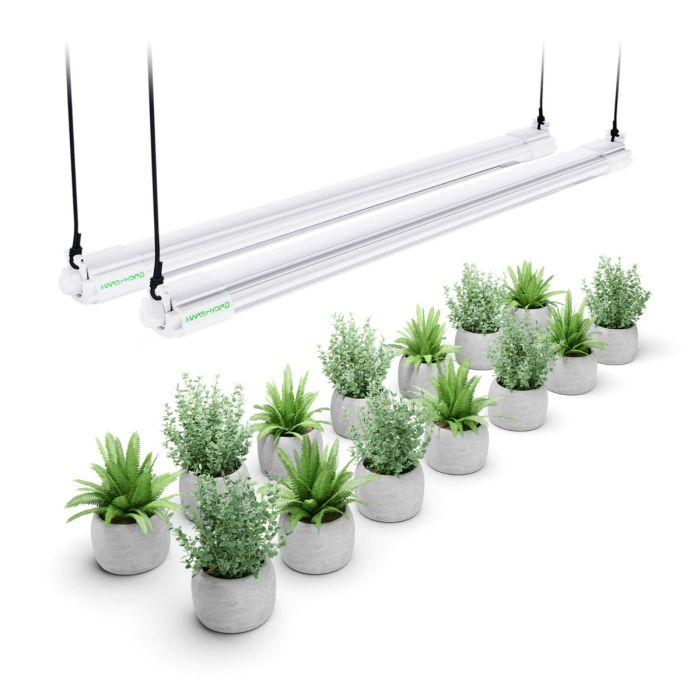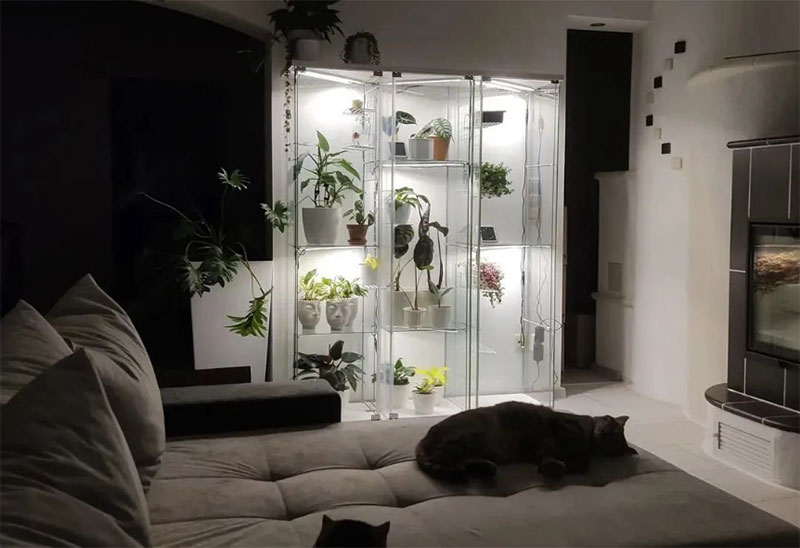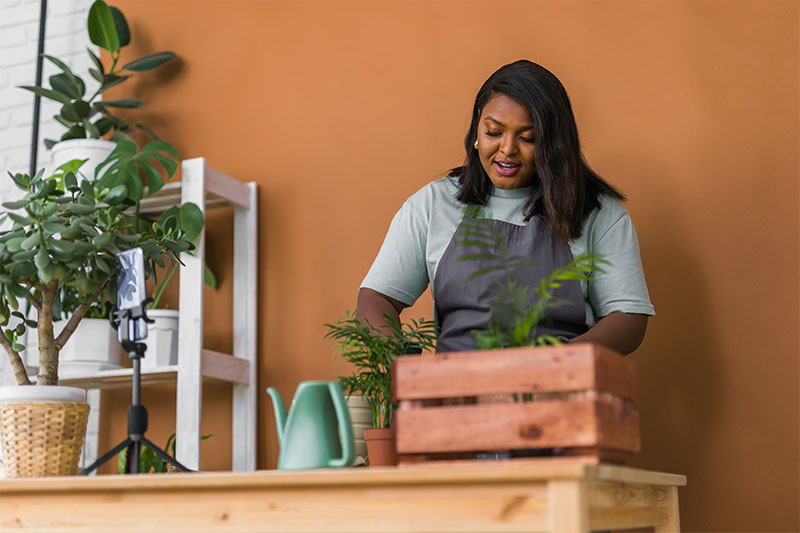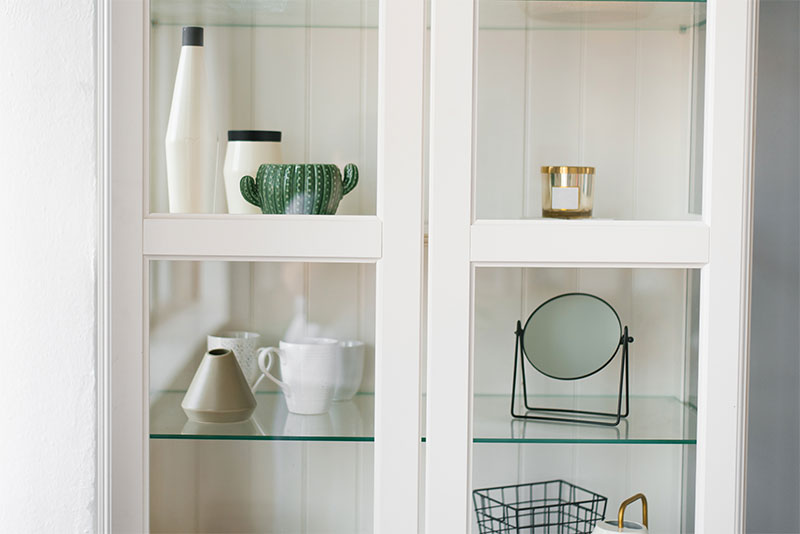Building a greenhouse cabinet from scratch is an enchanting endeavor that turns your living area into a verdant paradise, perfect for nurturing tropical plants and elevating your interior design. This comprehensive guide will walk you through creating a miniature greenhouse using mainly cabinets, crafting the ideal conditions for your plants to flourish. It's an excellent project for both experienced gardeners and those new to the world of plants, inviting anyone eager to infuse their space with more greenery and life.
Step 1: Choosing Your Cabinet
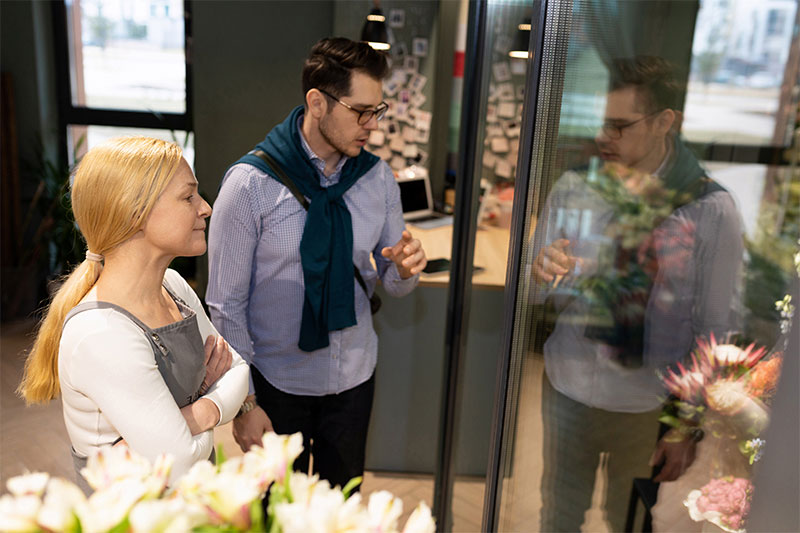
Selecting the right cabinet is a pivotal step in crafting a successful indoor greenhouse. A tall, glass-fronted cabinet is an excellent choice, offering both the necessary space for a diverse range of plants and visibility for easy monitoring. These cabinets serve a dual purpose: they're practical for keeping an eye on the well-being and development of your plants and they also contribute a decorative flair to your space.
When picking out a cabinet, look for one that not only accommodates the growth of your plants but also integrates seamlessly into your living space, enhancing it without becoming obtrusive. The cabinet's capability to incorporate enhancements, such as advanced lighting or systems to regulate humidity, is essential for promoting optimal growth conditions in your indoor garden. Selecting the ideal cabinet lays the groundwork for a flourishing indoor greenhouse that is as visually appealing as it is productive.
The MILSBO from IKEA is a prime example, with its tall, clear design making it an ideal candidate for those looking to establish an IKEA greenhouse cabinet. It strikes a balance between durability, cost-effectiveness, and aesthetic adaptability, supporting your plants' health while simultaneously beautifying your environment.
Step 2: Customizing the Cabinet for Optimal Growth
Once you've selected the ideal cabinet, the next phase is to tailor it to suit the needs of your plants perfectly. Start by evaluating the interior and remove any shelves that might obstruct light distribution. Replacing them with glass shelves is wise, as glass permits light to penetrate every level, ensuring equal light exposure for all plants. If the cabinet doesn't come with glass shelves, acquiring or customizing shelves to fit is an easy fix.
The cabinet's back wall offers a creative opportunity; painting it a light color can increase light reflection, aiding plant growth. Alternatively, installing a pegboard adds both a distinctive design feature and functional value, providing a handy area for hanging planters or tools, thus optimizing space use.
Another crucial preparation step is to ensure the cabinet can maintain the high humidity levels that many plants, particularly tropical varieties, thrive in. Sealing the door edges with weather stripping effectively traps moisture inside, creating a mini ecosystem conducive to vibrant, healthy plant growth. This adaptation is key to replicating the humid conditions many plants naturally prefer, transforming a basic cabinet into a lush indoor greenhouse oasis.
Step 3: Enhancing Light and Humidity
For the third step in establishing your indoor greenhouse cabinet, focusing on light and humidity optimization is vital for your plants' health and vitality.
Lighting
Even in well-illuminated spaces, some spots might not get enough natural light, making grow lights an essential component for your plant cabinet. To achieve even light distribution and ensure no plant remains shadowed, it's advisable to position grow lights beneath each shelf. LED grow lights are particularly advantageous due to their energy-saving features and durability. They produce light within a spectrum that plants predominantly use for photosynthesis, fostering robust growth while avoiding the heat stress that could damage delicate species. Among the various choices available, the VG40 LED grow light emerges as the premier option for these needs, delivering a perfect mix of efficiency, performance, and innovation for your indoor gardening space. Furthermore, the versatility of the VG Series is remarkable, making it an excellent fit for both under-canopy and microgreen growth. Its adaptability makes it an attractive option for a wide range of indoor growing scenarios, offering gardeners a solution that is both efficient and effective.
The Mars Hydro VG40 is acclaimed as a top-tier lighting choice for plant cabinets, suitable for under-canopy and microgreen growth due to its superior quality, energy efficiency, and thoughtful construction. With 292 premium LED beads, it uses just 40 watts and produces a minimal Daily Light Integral (DLI), emitting hardly any heat. This feature allows the lights to be installed close to the plants safely, ideal for supporting seedlings, clones, young plants, microgreens, and under-canopy vegetation in tight spaces. Additionally, the VG40's IP65-rated water resistance stands up to the moist conditions common in plant cabinets and other growth areas. Its capacity to connect up to 32 units in series enhances flexibility in lighting setups. Boasting a lifespan of 50,000 hours and a 5-year warranty, the VG40 offers a cost-effective and energy-efficient solution that significantly improves the growing conditions for a broad assortment of plants.
Humidity
Tropical plants flourish in environments rich in humidity. To replicate these tropical conditions inside your greenhouse cabinet, incorporating a compact humidifier is a strategic move. This device significantly elevates the moisture levels within the cabinet, closely mimicking the natural, humid environments that tropical plants love. Keeping track of the humidity levels is crucial for creating the perfect environment, which is why having a hygrometer on hand is invaluable. This tool measures the air's moisture content, enabling you to fine-tune the humidifier's output to ensure the humidity within the cabinet remains at an optimal level for your plant collection.
Ventilation
Preventing the accumulation of too much moisture and ensuring good air flow are key to avoiding fungal diseases, which tend to thrive in stagnant, humid conditions. Integrating a small fan into your setup promotes a gentle but steady air circulation throughout the cabinet. This not only refreshes the air but also helps to prevent excessive moisture accumulation on the foliage of your plants, significantly reducing the risk of fungal diseases and creating a healthier environment for your plants to thrive in.
Step 4: Introducing Your Plants to Their New Home
The moment has arrived to bring your plants into their new, carefully prepared environment.
Start this exciting phase by choosing a wide variety of tropical plants, which flourish under high humidity and prefer indirect sunlight. These conditions closely replicate their native environments, fostering healthy and vibrant growth.
As you place your plants within the cabinet, be mindful of their unique requirements for light and space. Situate taller plants at the back of the cabinet to avoid shading shorter ones, ensuring each plant enjoys sufficient light. Smaller or light-sensitive plants should be placed at the front or on lower shelves, where they can receive indirect sunlight without being overshadowed.
It's essential to ensure proper drainage to prevent common issues like root rot, a consequence of overwatering. Ensure that each plant's pot has drainage holes, and consider using trays or saucers to catch any excess water. This will help manage moisture effectively in the limited space of your cabinet.
By incorporating plants of different sizes, leaf textures, and colors, you'll not only boost the aesthetic appeal of your indoor garden but also create a lively and engaging environment. Variations in leaf texture, from the soft fronds of ferns to the sturdy, glossy leaves of philodendrons, bring depth and interest. Introducing color diversity, whether through flowering plants or variegated foliage, adds vibrant contrasts or gentle color transitions to your garden display.
Carefully selecting and arranging plants with attention to their specific needs and visual impact will turn your cabinet into a vibrant, miniature indoor jungle. This beautifully curated space will serve as both a stunning visual highlight and a thriving habitat for your plant collection.
Step 5: Maintenance and Care
Maintaining your indoor greenhouse cabinet is crucial for the health and longevity of your plants. A combination of careful observation and timely care is essential for cultivating a flourishing indoor garden. Here are effective strategies for maintenance and care:
Regular Health Checks: Consistently inspect your plants for any signs of distress, such as yellowing leaves, slowed growth, or pest presence. These indicators can suggest issues with moisture, light, or nutrients. Early detection and intervention can curb the spread of problems and mitigate their impact.
Adapting to Needs: Stay ready to adjust environmental factors like light, humidity, and watering based on your plants' evolving needs and seasonal changes. For instance, the winter months might necessitate increased lighting or humidity adjustments to offset the drier indoor air. Tailor watering practices to the life stage of each plant, ensuring young plants receive ample moisture for growth, while established plants are watered more conservatively.
Optimal Lighting Maintenance: Cleanliness of the cabinet's glass is critical for ensuring maximum light penetration. Accumulated dust and dirt can obscure light, hindering plant growth. Regular wiping with a soft, moist cloth will keep the pathway clear for light, benefiting your plants immensely.
Promoting Good Airflow: Occasionally opening the cabinet doors encourages air circulation, simulating the natural air movement found outdoors. This practice not only replenishes the cabinet's internal air but also aids in regulating humidity and preventing the growth of mold or mildew, which flourish in still, moist environments.
Pruning and Repotting: Regularly trim away dead or decaying foliage to foster healthy new growth and preserve the visual appeal of your indoor garden. Also, monitor your plants as they grow; they may need to be moved to larger pots to support their developing root systems and prevent them from becoming root-bound, which could stunt their growth and health.
Implementing these maintenance strategies will not only ensure the vitality and growth of your plants but also enhance the enjoyment and satisfaction of your indoor gardening experience.
Enhancing Your Greenhouse Cabinet with Personal Flair
The journey of building a greenhouse cabinet transcends mere plant maintenance; it's a chance to curate a space that reflects your unique taste and creative flair. Delving into decor and supplementary features reveals how thoughtful touches, from the texture of your pots to the charm of playful figurines, can elevate the overall look and feel of your indoor garden. This venture into decoration is an invitation to marry practicality with personal expression, transforming your greenhouse into a vibrant showcase of your individuality and design sensibility.
Embrace the opportunity to experiment with decorative layers that add depth and character to your cabinet. Consider the visual harmony created by a variety of pot materials—ceramic, metal, or even recycled goods—each adding its own texture and color to the ensemble. Introducing elements such as miniature sculptures, decorative stones, or even themed ornaments can infuse your space with whimsy and personality.
This section encourages a creative blend of aesthetics and utility, urging you to view your greenhouse cabinet not just as a home for your plants, but as a canvas for your artistic expressions. By integrating elements that resonate with your personal style, you can create an indoor garden that is not only a nurturing environment for your plants but also a dynamic and inviting space that captivates and inspires.
Decor and Additional Features
Turning your greenhouse cabinet into a captivating and personalized sanctuary extends far beyond plant arrangement. By integrating decorative elements and carefully selected accessories, you can elevate its charm and express your unique style. Imagine decorative pots that harmonize with your plants' colors or textures, enriching the visual appeal. Delightful statues or figurines nestled amidst the foliage can evoke whimsy or serenity, while natural accents like stones or pebbles imbue the space with a tranquil, earthy ambiance.
But don't confine your creativity to the cabinet's interior. The surrounding space offers abundant opportunities for embellishment and functional decor. Graceful hanging plants cascading around the cabinet create a verdant, cocooning atmosphere. Meanwhile, a small step ladder or shelves adjacent to the cabinet serve as additional display areas for plants or decorative pieces, enriching the greenery and enhancing the overall dynamism of the arrangement.
Inspiration and Customization
Your greenhouse cabinet transcends its role as a mere plant haven—it's a canvas for showcasing your creativity and dedication to plant care. Exploring online marketplaces like Etsy unveils a treasure trove of distinctive knobs, handles, and custom-made shelves that can redefine the cabinet's appearance. These intricate details have the power to elevate your greenhouse, setting it apart and embodying your unique aesthetic.
For those inclined towards hands-on projects, the realm of DIY offers boundless possibilities. Imagine spray-painting wire shelves to infuse a burst of color or crafting your own planters from repurposed materials for an eco-conscious touch. These imaginative endeavors not only infuse your personality into the space but also enhance the cabinet's functionality. Whether it's through artisanal hardware, inventive plant arrangements, or handcrafted decor, each customization layer adds a touch of individuality, transforming your indoor garden into a captivating reflection of your personal style and botanical passion.
Conclusion
Embarking on the journey of creating an indoor greenhouse cabinet transcends the realm of traditional gardening—it's an opportunity to infuse your home with a distinct touch of decor. Functioning as a controlled environment for your plants to flourish, it also serves as a captivating showcase for your growing botanical collection. By following these steps, you're poised to craft a magnificent greenhouse cabinet that seamlessly integrates nature into your living space, regardless of the season.
Whether your passion lies in nurturing tropical plants or you simply seek an innovative way to exhibit your greenery, an IKEA greenhouse cabinet offers endless possibilities for customization. Tailoring it to suit your preferences ensures both your plants and your space radiate their utmost beauty. Embrace the transformative power of indoor gardening, and let your greenhouse cabinet become a testament to your botanical passion and personal style, enriching your home with natural splendor throughout the year.




